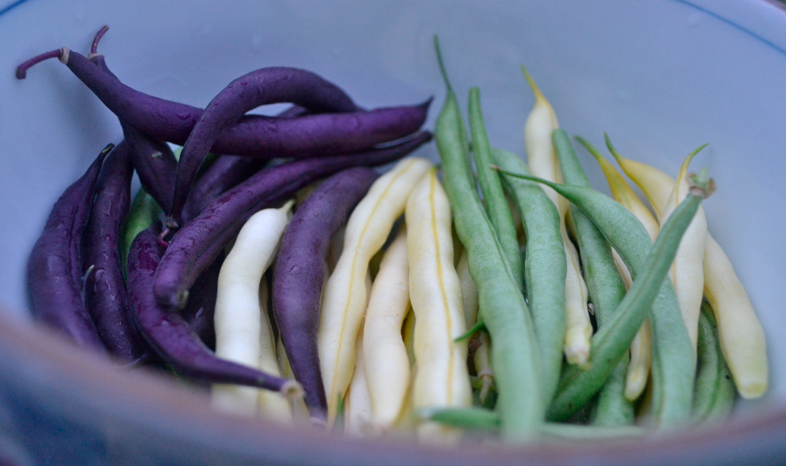A few weeks ago, we were talking about beans, and I was extolling the virtues of the Royal Burgundy bush beans I’ve been growing — their delicate violet flowers, the dark pods dangling like mysteries from their stems. But I also mentioned a slight sadness: the purple beauties turn green when you cook them.
Which led to a very good question from Matt B. “What’s with purple beans? Why do they turn green when I cook them? For that matter, why do dragon’s tongue and cranberry beans both lose their striping when cooked? Can I do anything to help them keep their color? Maybe a quick blanch? A vinegar bath?”
Here my friend, is your answer, with apologies for the delay. It’s because of anthocyanins. That’s the name for the group of chemicals that gives the purple color to purple beans and purple broccoli and purple peppers and red cabbage. Unfortunately, heat causes rapid decomposition of anthocyanin. And then what happens to your burgundy beans is a lot like what happens to leaves in the fall — as the dominant color chemicals break down, the other color chemicals that were masked but there all along finally have the chance to show through. In the case of burgundy beans, the masked color is bright green.
HOWEVER! There’s still hope for your purple beans (and the stripes of your cranberry beans). Anthocyanins’ strength is linked to acidity — lower acidity equals weaker anthocyanin expression. So, just as you suspected, the acid in a vinegar bath with help. Ditto with a lemon juice bath. And a quick blanch is a great way to minimize the heat breakdown. Even with that, they probably won’t stay quite as brilliantly purple as they are when they’re raw, but you’ll definitely save some of the color!
Tags: beans, purple beans, Q&A